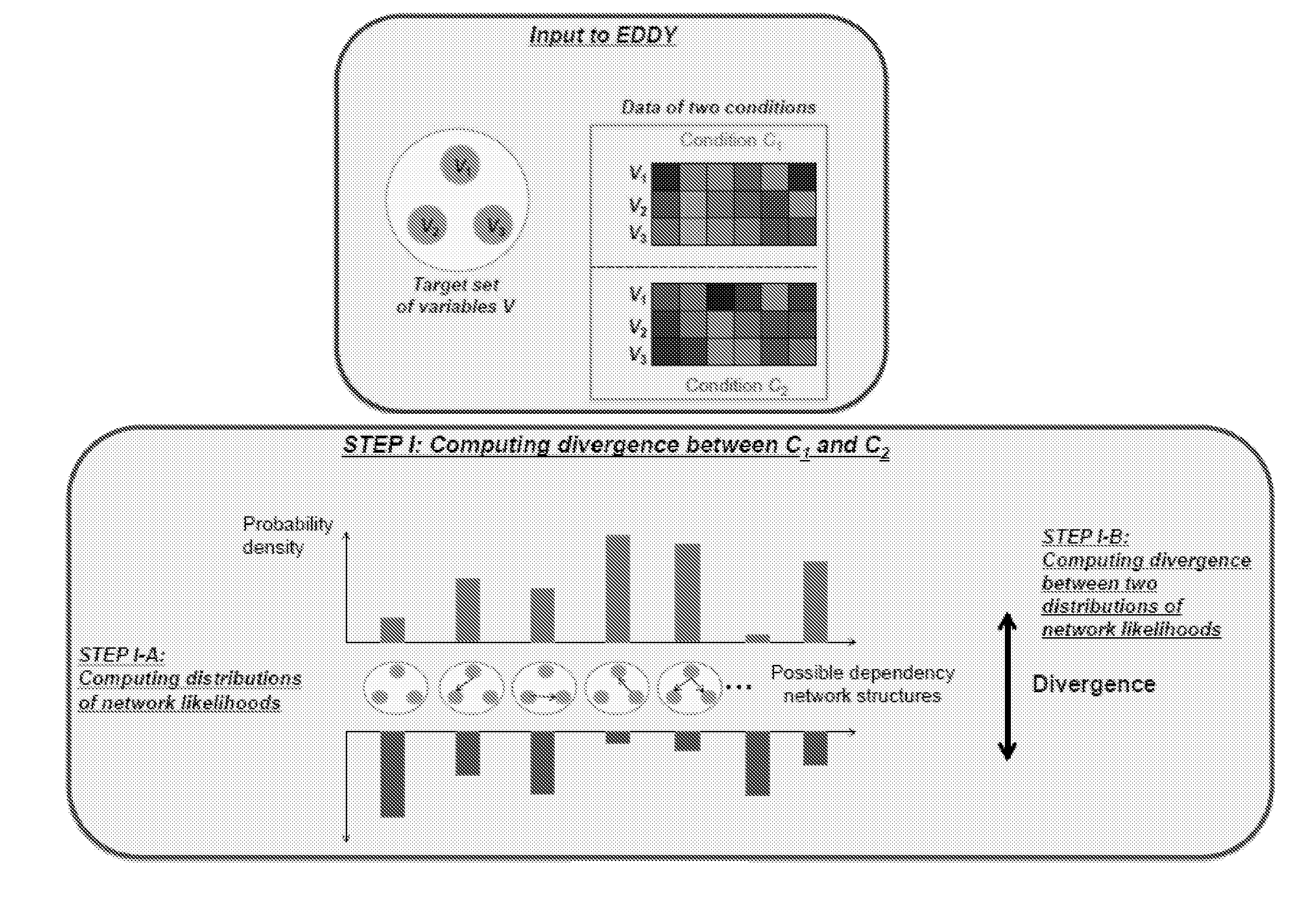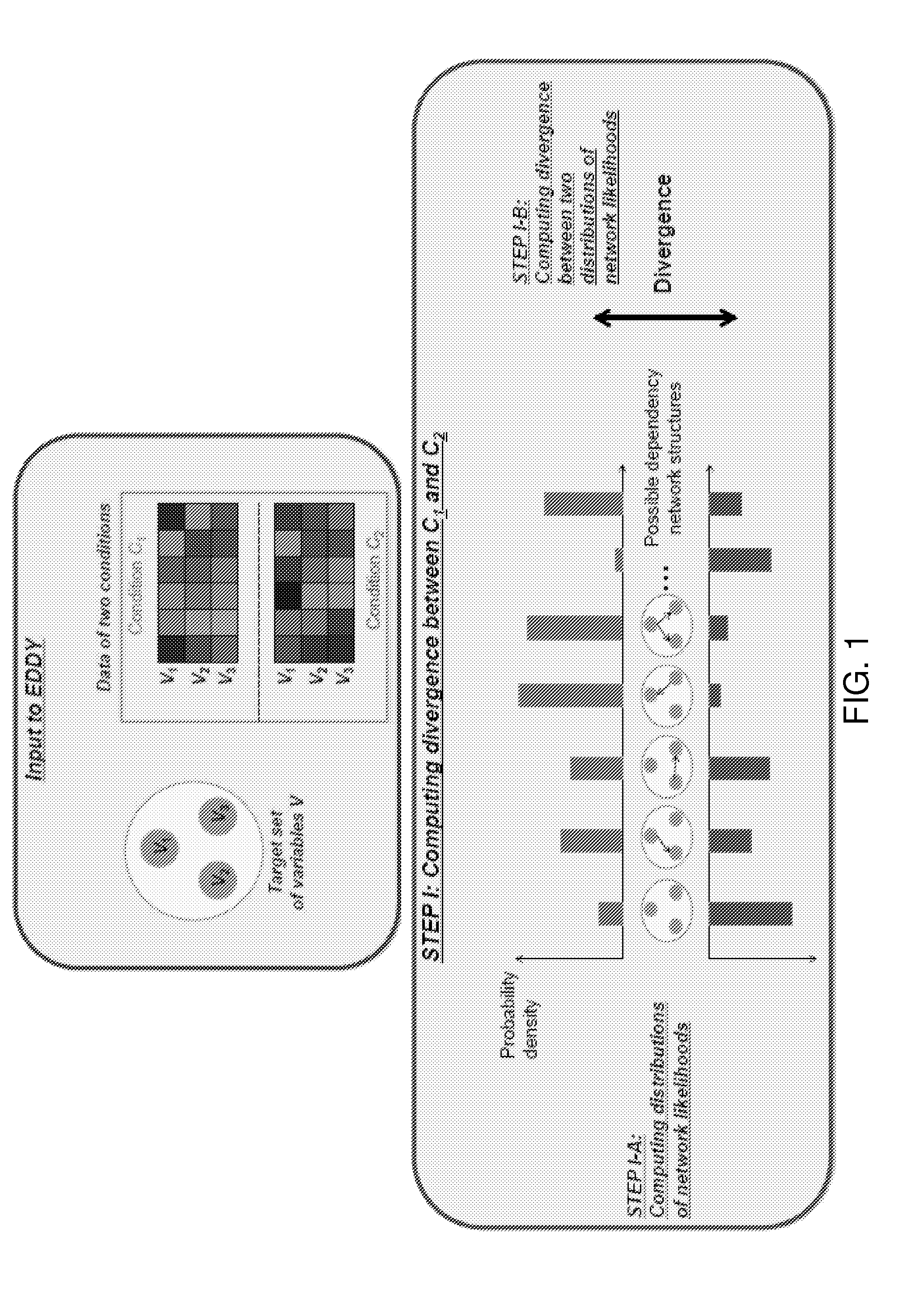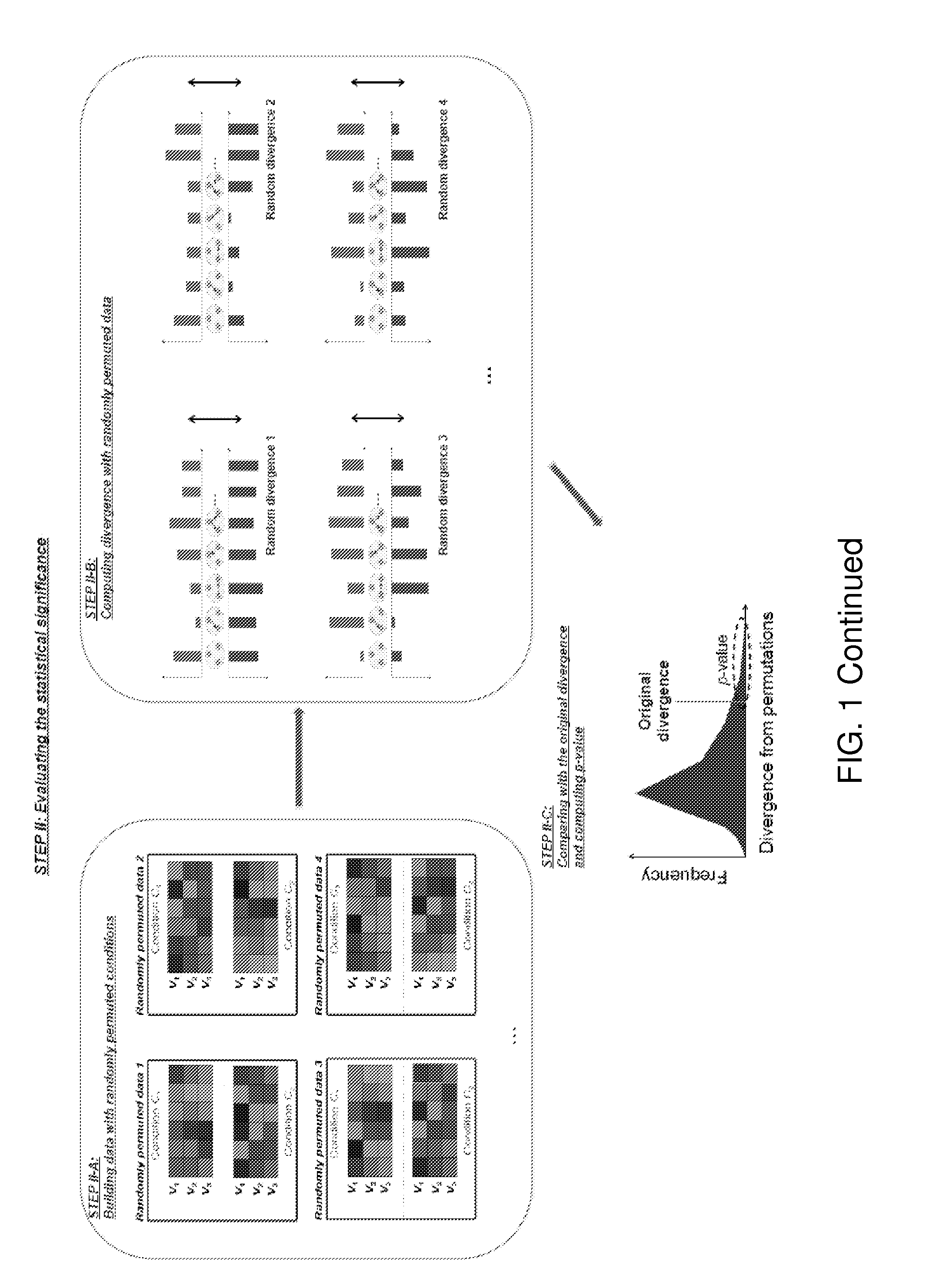Systems and methods for identifying the relationships between a plurality of genes
a technology of system and method, applied in the field of system and method for identifying the relationships between a plurality of genes, can solve the problems of inability to identify gene sets with differential genetic interactions/ relationships, inability to focus on individual variables instead of a set of variables, and inability to achieve the effect of achieving the effect of achieving the effect of achieving the effect of achieving the effect of achieving the effect of achieving the effect of achieving the effect of achieving the effect of achieving th
- Summary
- Abstract
- Description
- Claims
- Application Information
AI Technical Summary
Benefits of technology
Problems solved by technology
Method used
Image
Examples
example 1
Methods and Systems
Approach
[0056]As illustrated in FIG. 1, in some embodiments of the invention, the method can compute the discrepancy between probability distributions of dependency network structures for a given set of variables. Moreover, the method can compute the probability distributions of dependency network structures across given samples of at least two different conditions, and then can evaluate the associated statistical significance. In particular, it is assumed that a set of variables V is given for the target of a test. For V, there are N (i.e., a finite number) possible dependency network structures g1, g2, . . . , gN for the variables. If one considers a discrete random variable G that can have g1, g2, . . . , gN as its discrete values, the posterior probability P (G|DC) for the data DC of a given condition C can represent the probability distribution of dependency network structures for V in the condition C. When two data sets, DC1 and DC2, are given for two differ...
example 2
Simulation Experiment
Environment
[0067]Simulation experiments were conducted to evaluate the ability of EDDY to discriminate between two different conditions. In the simulation experiment, |V|=v discrete random variables were considered that can have three possible discrete values (−1, 0, 1). A Bayesian network B0 with 2v edges was randomly built with the v variables, and d samples were generated from B0 to constitute a data set D0. To generate a data set of another condition for comparison, Bs was built by randomly removing s(≦2v) edges from B0, and d samples were generated from Bs for Ds. In the process of edge removal, the conditional probability table of a variable that is affected by the edge removal is randomly re-initialized. This simulation experiment demonstrates that the divergence JS increases and the statistical significance p-value decreases as s, which represents the distance between two data sets, in the sense of dependency relationship, increases.
[0068]Different numbe...
example 3
Application
Data and Environment
[0078]According to some embodiments of the invention, the method (i.e., EDDY) may be conducted, performed, and / or executed using high-performance computers (e.g., cluster computers), as the steps may require heavy computation. In the following example, EDDY was used to identify biological functions and pathways that show distinct genetic relationships / interactions in the subtypes of glioblastoma multiforme (GBM). Gene expression data of GBM was obtained from The Cancer Genome Atlas (TCGA) for 202 samples with four previously reported GBM subtypes (54 Classical, 58 Mesenchymal, 33 Neural, and 57 Proneural), as well as 10 normal samples. The expression of 17,814 genes in the GBM samples was standardized to z-scores using the 10 normal samples as a reference. The standardized expression values were quantized to three discrete values of “1” (over-expression compared to normal), “0” (no-change compared to normal), and “−1” (under-expression compared to norm...
PUM
 Login to View More
Login to View More Abstract
Description
Claims
Application Information
 Login to View More
Login to View More - R&D
- Intellectual Property
- Life Sciences
- Materials
- Tech Scout
- Unparalleled Data Quality
- Higher Quality Content
- 60% Fewer Hallucinations
Browse by: Latest US Patents, China's latest patents, Technical Efficacy Thesaurus, Application Domain, Technology Topic, Popular Technical Reports.
© 2025 PatSnap. All rights reserved.Legal|Privacy policy|Modern Slavery Act Transparency Statement|Sitemap|About US| Contact US: help@patsnap.com



